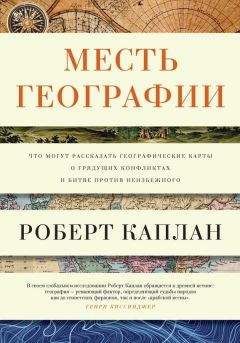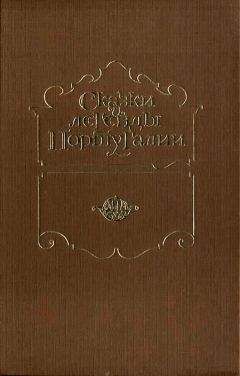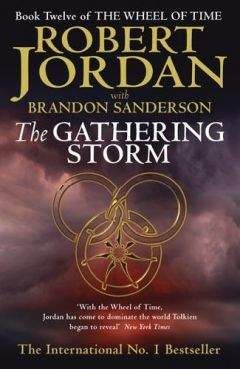323
Spence J. D. The Search for Modern China. New York: Norton, 1990. P. 67.
Blair D. Why the Restless Chinese Are Warming to Russia’s Frozen East // Daily Telegraph. — London. — 2009. — July 16.
Согласно материалам Министерства обороны США, военные теоретики КНР разработали концепцию «первой и второй островных цепей», своеобразных воображаемых «линий», которые обозначают первостепенные зоны обеспечения безопасности КНР по периметру морских границ в восточном и юго-восточном направлении.
Spence, The Search for Modern China, p. 97.
Maclean F. Eastern Approaches. New York: Little, Brown, and Company, 1949. P. 120.
Spence, p. 13.
Lattimore O. Inner Asian Frontiers: Chinese and Russian Margins of Expansion // The Journal of Economic History. — Cambridge, England. — 1947. — May.
Sinha U. K. Tibet’s Watershed Challenge // The Washington Post. — 2010. — June 14.
Wong Е. China Quietly Extends Footprints Into Central Asia // New York Times. — 2011. — January 2.
Starr S. F., Kuchins A. C., Benson S., Krakowski E., Linn J., Sanderson T. The Key to Success in Afghanistan: A Modern Silk Road Strategy. Washington: Central Asia-Caucasus Institute and the Center for Strategic and International Studies, 2010.
Brzezinski Z. The Grand Chessboard: American Primacy and Its Geostrategic Imperatives. New York: Basic Books, 1997. P. 167.
Twining D. Could China and India Go to War Over Tibet? // ForeignPolicy.com. — Washington. — 2009. — March 10.
Lattimore О. Chinese Colonization in Manchuria // Geographical Review. — London. — 1932. Tregear, Geography of China, p. 270.
Dillon D., Tkacik Jr. J. J. China’s Quest for Asia // Policy Review. — Washington. — 2005/2006. — December/January.
Ross R. S. The Rise of Chinese Power and the Implications for the Regional Security Order // Orbis. — Philadelphia. — 2010. — Fall.
Mearsheimer J. J. The Tragedy of Great Power Politics. New York: W. W. Norton, 2001. P. 135.
Fravel M. Т. Regime Insecurity and International Co-operation: Explaining China’s Compromises in Territorial Disputes // International Security. — 2005. — Fall.
Grygiel, p. 170.
Spence, p. 136.
Fairgrieve, Geography and World Power, pp. 242–243.
Holmes J., Yoshihara Т. Command of the Sea With Chinese Characteristics // Orbis. — Philadelphia. — 2005. — Fall.
Ross, The Rise of Chinese Power and the Implications for the Regional Security Order (см. примечания Росса к цитате). Krepinevich A. F. China’s ‘Finlandization’ Strategy in the Pacific // The Wall Street Journal. — New York. — 2010. — September 11.
С 25 сентября 2012 г. в составе ВМФ НОАК уже имеется первый и единственный авианосец «Ляонин».
Cropsey S. Alternative Maritime Strategies, grant proposal. Ross R. S. China’s Naval Nationalism: Sources, Prospects, and the U. S. Response // International Security. — Cambridge, Massachusetts. — 2009. — Fall. Kaplan R. D. How We Would Fight China // The Atlantic Monthly. — Boston. — 2005. — June. Helprin М. Why the Air Force Needs the F-22 // The Wall Street Journal. — 2010. — February 22.
Holmes, Yoshihara, Command of the Sea With Chinese Characteristics.
Ross.
Erickson А., Goldstein L. Gunboats for China’s New ‘Grand Canals’? Probing the Intersection of Beijing’s Naval and Oil Security Policies // Naval War College Review. — Newport, Rhode Island. — 2009. — Spring.
Spykman, America’s Strategy in World Politics, p. XVI. Фраза впервые появилась в: Spykman, Rollins А. А. Geographic Objectives in Foreign Policy II // The American Political Science Review. — 1939. — August.
Особенно актуальным это будет, если построят каналы и наземные мосты, предложенные для соединения Индийского и Тихого океанов. — Прим. авт.
См. примечание автора в сноске в тексте главы.
Spykman, America’s Strategy in World Politics, p. 60.
Erickson A. S., Yang D. D. On the Verge of a Game-Changer: A Chinese Antiship Ballistic Missile Could Alter the Rules in the Pacific and Place U. S. Navy Carrier Strike Groups in Jeopardy // Proceedings. — Annapolis, Maryland. — 2009. — May.
Newmyer J. Oil, Arms, and Influence: The Indirect Strategy Behind Chinese Military Modernization // Orbis. — Philadelphia. — 2009. — Spring.
French H. W. The Next Empire // The Atlantic. — Washington. — 2010. — May.
Гуам — крупнейшая стратегическая военная база США в Тихом океане. имеет официальный статус «организованной неприсоединенной территории США».
Garrett Р. Indian Ocean 21, November, 2009.
Corbett J. S. Principles of Maritime Strategy. New York: Dover Publications, Mineola, 2004. Pp. 213–214.
Ross R. S. The Geography of the Peace: East Asia in the Twenty-First Century // International Security. — Cambridge, Massachusetts. — 1999. — Spring.
Mearsheimer, The Tragedy of Great Power Politics, pp. 386, 401–402.
Fairgrieve, Geography and World Power, p. 253.
Моны — народ, живущий на юге Бирмы и на юго-западе Таиланда. Язык — монский, относится к мон-кхмерской ветви австроазиатской семьи языков; имеется письменность, восходящая к VI в. н. э. По религии — буддисты. В I тысячелетии н. э. у них сложились ранние государства (Дваравати и др.).
Пью — народ, основавший группу городов-государств, которые существовали со II в. до н. э. до конца IX в. н. э. в современной Верхней Бирме (Мьянме). Города-государства были созданы вследствие миграции к югу народности пью, говорившей на языке тибето-бирманской языковой подсемьи. Они были первыми жителями Бирмы, о которых сохранились письменные записи.
Как отмечает Паниккар: «Проблема этих рек в том, что текут они по гористой местности и не несут живительную влагу в долины, где ведутся земледельческие работы…». — Прим. авт.
Panikkar K. M. Geographical Factors in Indian History. Bombay: Bharatiya Vidya Bhavan, 1954. P. 41.
Fairgrieve, pp. 253–254.
Mackinder H. J. Eight Lectures on India. London: The Visual Instruction Committee of the Colonial Office, 1910. P. 114.
Stein B. A History of India. Oxford, England: Blackwell, 1998. Pp. 6–7.
Персидский стал литературным языком в Индии с XII в., а формально закрепился и оформился в официальный язык с XVI в. — Прим. авт.
См. примечание автора в сноске в тексте главы.
Panikkar, Geographical Factors in Indian History, p. 21.
Ostler N. Empires of the Word: A Language History of the World. New York: HarperCollins, 2005. P. 223.
Wink A. Al-Hind: The Making of the Indo-Islamic World. Volume I: Early Medieval India and the Expansion of Islam 7th-11th Centuries. Boston: Brill Academic Publishers, 1996. Chapter IV.
Stein, A History of India, pp. 75–76.
Watson А. The Evolution of International Society: A Comparative Historical Analysis. London: Routledge, 1992. Pp. 78–82.
Stein, p. 121.
Fairgrieve, p. 261.
Panikkar, p. 43.
Fairgrieve, p. 262.
Раджпут — представитель военно-феодальной касты в средневековой Северной Индии.
Kaplan R. D. Monsoon: The Indian Ocean and the Future of American Power. New York: Random House, 2010. Pp. 119, 121.
Panikkar, pp. 40, 44.
Kaplan, Monsoon, pp. 122–123. Richards J. F. The New Cambridge History of India: The Mughal Empire. New York: Cambridge University Press, 1993. Pp. 239, 242.
Eaton R. M. The Rise of Islam and the Bengal Frontier, 1204–1760. Berkeley, California: University of California Press, 1993. Pp. xxii — xxiii, 313.
Friedman G. The Geopolitics of India: A Shifting, Self-Contained World // Stratfor. — 2008. — December 16.
Географически и культурно отношения к Индии и Ирану равноудаленные. — Прим. авт.




